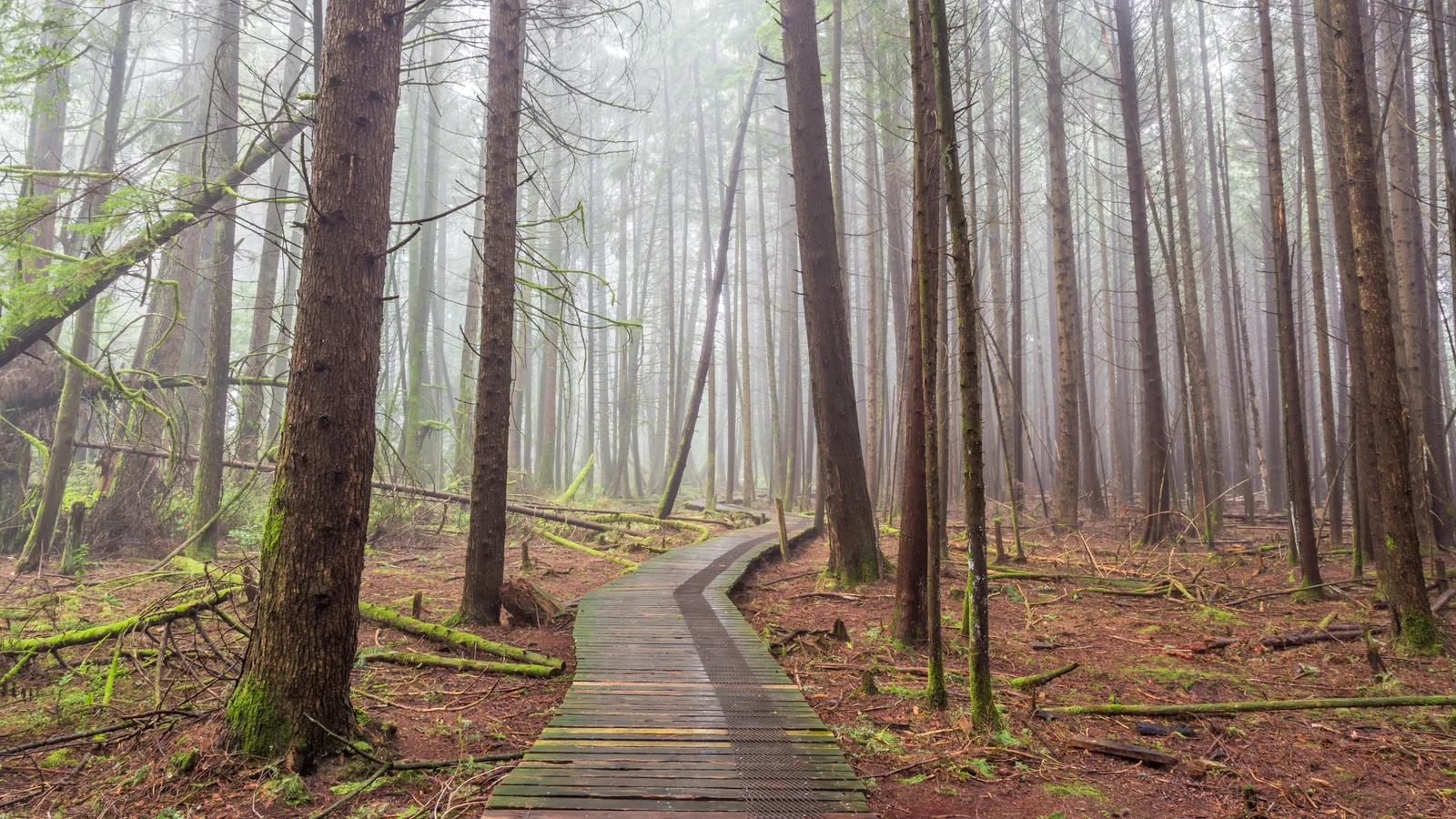South of the riverbend, twenty minutes along a trail fringed with pink flowers of hardhack and gangly stalks of sweet gale, a black spruce that I call the World Tree stands against a spring sky. Here, within earshot of the encroaching highways of suburban Vancouver, a broad bole streaked with umber meanders skyward. High up, an eagle rides a crest of sea air, glances down, then spirals away. Through a lattice of dark branches restless with vigor, nomadic flecks of blue sweep toward the horizon. A rustling brown blur in the canopy — squirrel — cracks a narrow branch. Underfoot, a long skein of root twists out from the great trunk, meanders toward a bristled head of cotton grass. The quick trill of a robin sounds nearby.
I stand at the base of this colossal and ancient tree, wondering about its centuries of slow dreaming, its resonance that captures the vanishing songs of the earth. Spruce is the most musical of woods; Stradivarius used it for his violins. I listen, trying to catch the rhythm of day, the soft unfurling of the world. Resting anonymous here in a glade at the edge of Burns Bog, this tree is the true axis of my earth, the juncture of myth and hope and memory told of in the oldest tales. It snakes up from an unfathomable source in the underworld, flows into a trunk scaled as dragon-hide, turbulent as smoke. Low branches curve upward like fractured tusks. Overhead, gossamer moss hangs from encircling boughs over a quiet clearing. The air breathes, exhales with the tang of Labrador tea.
I step forward, searching the mottled bark for vertical furrows that denote stability beneath. The absence of twists, of a corkscrew pattern, marks the tree as possessing clear and sonorous wood. Its body is a vast instrument, humming. The rumble of a passing truck, too loud and too close in the afternoon air, disrupts the song of the tree, reminds me how fragile, how precarious is the solace of this place. Burns Bog is the largest urban wilderness in North America, home to rare Sandhill cranes and Mariposa butterflies, refuge for bears and countless other creatures fleeing the urban web. Ten thousand acres of wetland and forest spread up from the sea and cross a wide plain adjacent to the Fraser River. A single tendril of green extends far up the hillside, along a creek that wanders behind my home. A little farther on, the water widens into a pond where I take my kids to play with their toy boats. Every year, small numbers of salmon come to spawn — behind the mall, and the new townhouse complex.
The eventual fate of Burns Bog — park, industrial sprawl, garbage dump — lies hidden in a labyrinth of divergent aims: community, business, government. Its future is shrouded, its myths not yet spun into a thread of telling. But as I trace my fingers over the trunk, feeling its wrinkles and whorls, I am reminded of the Norse myth of the World Tree, in which a great battle ends with the destruction of the earth by fire. After the maelstrom, one small forest remains, preserved by the guardians Lif and Lifthrasir, whose names mean “life” and “eager for life.” They are the inheritors of a new and unshadowed world, a delicate landscape snatched from ruin. A droplet of clear sap hovers at the edge of a deep cleft in the bark. I taste it: sweet, like sugarcane, but with a delicious warmth. My tree of storms, witness to ghost cougars and startled deer, is an archetype of all sacred places. Through their preservation, we drink from the ancestral well. Long draughts of belonging and sustenance.
The trail curves back from here, toward the service road and a tractor mired in the mud. I look up. The sun has drifted across the shell of the sky. I turn and follow the path. The peat shivers as I move across it, pulsates with the rhythm of my steps. A pair of sparrows flits through the underbrush, disappears behind a curtain of bracken ferns and emerges, darting and jubilant, on the other side. Life, and eager for life.
(Originally published in Canadian Geographic magazine.)
